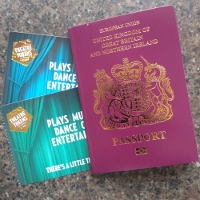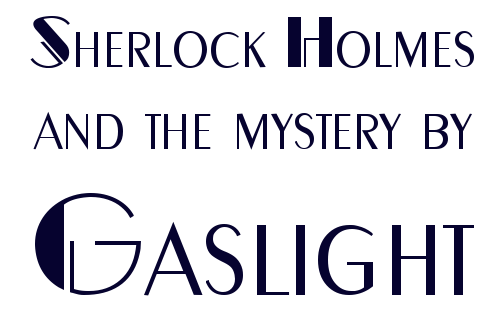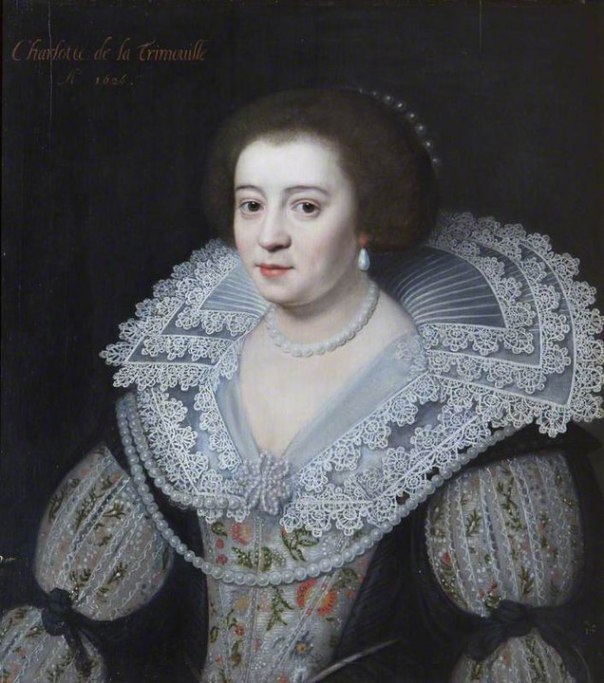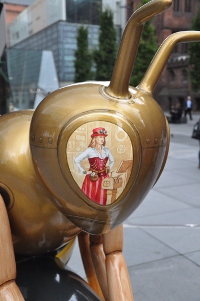On the checkout page of the Lazy Bee Scripts web site, there’s a drop-down list that allows the customer to select their title. It’s a very short list. I think the record for choice of titles was held by a Canadian web site with over a hundred, but I can’t find that one, so I’ll have to make do with citing Fortnum and Mason which (when I last checked) listed 56 options. (They anticipate more orders from military officers, bishops and nobility than we do). Our list has just seven options. I’m thinking of scrapping it, or replacing it with just one. Aside from the gender-neutral options (Dr, Prof, Rev), there is one male honorific and three female: Mrs, Miss and Ms. One of the reasons for scrapping it is the number of instances in which we end up addressing men with the title Ms. This happens because a small number of men seem to assume that the default title is (or should be) the male one, whereas Ms is our default because, by a small margin, when we first set the list, most of our customers were female.
We offer Mrs and Miss because some women find Ms clumsy and artificial – but then all titles are artificial. Aside from signifiers of earned rank (Doctor, Brigadier, etc.), titles are a social construct; a polite form of address. They are an artefact of a language and society. Some languages do without them (my friend suggested Norwegian as an example), some rely on patronymics for polite formality. English has co-opted Master and Mistress, originally polite acknowledgements of authority, and then corrupted the latter by turning it into a designator of marital status, whilst not adopting the same path for the male component. (Some weeks ago, when I was discussing this subject, I came across Sara Wheeler talking about this on Radio 4’s ‘A Point of View’. Well worth a listen, particularly if you want a little more of the history.)
 I am of the view that not only is it unnecessary to use a form of address that includes marital status, but also that for most forms of communication gender is completely irrelevant. But what should one do instead? I am so old that I find the polite form deeply ingrained. The problem with ditching all titles – which is otherwise a good option – is that it loses the distinction between politeness and familiarity. As it is, I can distinguish between formal enquiries and snake-oil salesmen who are trying to pose as my best mate. I would prefer to have the option of a polite form of address. The friend with whom I was discussing this preferred M, others already use Mx. I’m afraid that those irritate me. I think it’s the way they stand for something without that something being explicit. I would prefer to co-opt a word that is already in use. “Comrade” carries too much baggage (Tovarisch). “Friend” would be inappropriate in some circumstances (a court summons, for example). My favoured option is Citizen. It’s a bit long-winded (three syllables), but it conveys a polite address to someone with a shared participation in society. (Arguably, it is weighed-down by the French Revolution, but these days most of us aren’t particularly troubled by that.) One objection to Citizen is that, technically, British people are not citizens; in a monarchy we are subjects. (I object to being a subject.) One cannot address a customer as Subject. I looked-up synonyms for Citizen, hoping for something better. The results were mildly depressing: subject, national, native, taxpayer, voter. The best (but most ridiculous) was cosmopolite.
I am of the view that not only is it unnecessary to use a form of address that includes marital status, but also that for most forms of communication gender is completely irrelevant. But what should one do instead? I am so old that I find the polite form deeply ingrained. The problem with ditching all titles – which is otherwise a good option – is that it loses the distinction between politeness and familiarity. As it is, I can distinguish between formal enquiries and snake-oil salesmen who are trying to pose as my best mate. I would prefer to have the option of a polite form of address. The friend with whom I was discussing this preferred M, others already use Mx. I’m afraid that those irritate me. I think it’s the way they stand for something without that something being explicit. I would prefer to co-opt a word that is already in use. “Comrade” carries too much baggage (Tovarisch). “Friend” would be inappropriate in some circumstances (a court summons, for example). My favoured option is Citizen. It’s a bit long-winded (three syllables), but it conveys a polite address to someone with a shared participation in society. (Arguably, it is weighed-down by the French Revolution, but these days most of us aren’t particularly troubled by that.) One objection to Citizen is that, technically, British people are not citizens; in a monarchy we are subjects. (I object to being a subject.) One cannot address a customer as Subject. I looked-up synonyms for Citizen, hoping for something better. The results were mildly depressing: subject, national, native, taxpayer, voter. The best (but most ridiculous) was cosmopolite.
So, do you mind if I call you Citizen?


 On or in?
On or in?






 You can have a rum do and you can have a posh do. You might even have rum at a posh do.
You can have a rum do and you can have a posh do. You might even have rum at a posh do.

